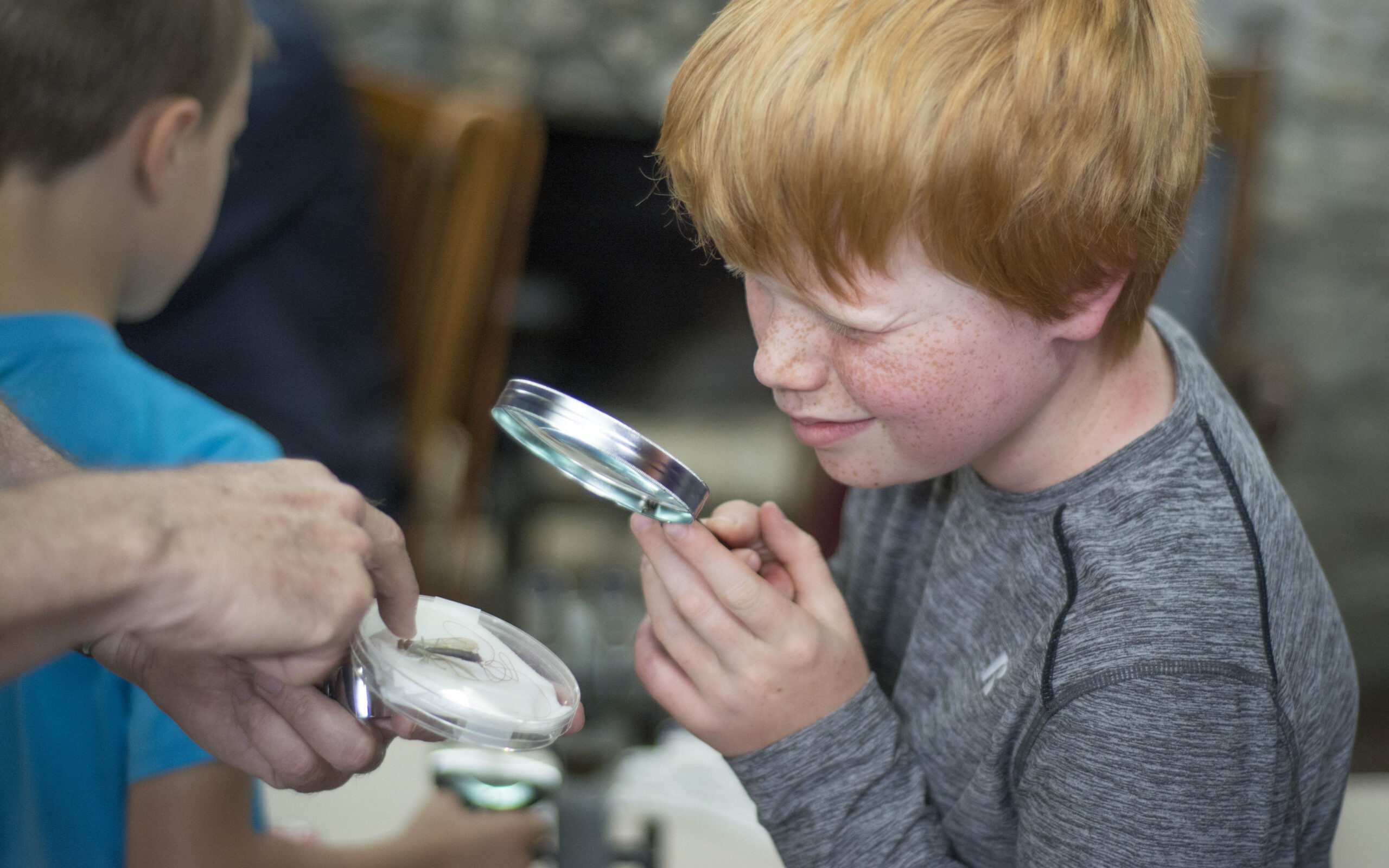
CARIBOU, Maine — The Nylander Museum hosts numerous events and classes for the community spanning a number of topics, but the subject of Thursday’s gathering was one that no Mainer can escape: insects.
James Dwyer, crops specialist with the UMaine Orono Cooperative Extension in Presque Isle, spoke to about seven young learners about how to identify insects and determine which ones are harmful, beneficial, or both during the “Bugging You” program.

Noah Knorr inspects insects through a microscope during the Nylander Museum’s educational “Bugging You” event on July 12.
(Christopher Bouchard)
“Insects are extremely important to us because, without pollination from bees for example, you wouldn’t have apples, strawberries, and a lot of fruits,” Dwyer said. “Some insects can also transmit diseases to plants, and other insects around the house are beneficial, so understanding insects is extremely important for everyone.”
The youngsters intently listened while Dwyer discussed the relevance of bugs, and chimed in with comments or questions. One boy asked about “the bug that lays eggs on his porch” and a girl commented that the pheromones released by certain insects are like a “perfume” for bugs.
After giving his presentation, Dwyer showed the young participants how to trap insects and determine the difference between insects and arachnids. Children also were able to use a microscope and magnifying glass to look at several deceased bugs and see their defining characteristics first-hand.
Dwyer said some County residents may be surprised to hear how large some of the local bugs can grow, and that some nearby ponds and lakes are home to 4-inch long water beetles.

A plethora of insects were on display during the Nylander Museum’s July 12 “Bugging You” event. Pictured here is a giant water bug, which reaches about 4 inches in length and is one of the largest insects found in Aroostook County.
(Christopher Bouchard)
He added that “literally millions of dollars” are spent each year by Aroostook County’s agriculture industry to manage the insect population.
As far as what to look out for, Dwyer said that people with allergies should steer clear of bees, adding that mosquitos are “becoming more of an issue across the state,” and that ticks also are becoming an increasingly serious issue.
“We are finding more Lyme disease in the County area,” he said, “which is something people should be aware of.”
The event was part of the Nylander’s “Summer Camp” series, and Nylander board member Gail Hagelstein said it came about through a brainstorming session in which she and other museum officials agreed that the ubiquitousness of bugs lent itself to an event that would engage area children.
“We want them to be aware of what’s happening in this area,” she said. “Ticks are really becoming a problem around the country, so we want them to know the difference between insects …”

Pictured here is a Catalpa Sphinx Moth, one of several insects on display during the Nylander Museum’s July 12 “Bugging You” event.
(Christopher Bouchard)
Organizers also wanted to teach the youngsters the right vocabulary as well so they can “identify body parts such as the head, thorax, and mandible,” Hagelstein said.
The event also featured some trivia questions, and even Hagelstein was surprised with an answer.
“One of the trivia questions is: ‘How many species of bugs are there in the world?’” She said. “I didn’t know the answer at first, but it’s over a million. You really can’t escape bugs.”
Hagelstein was pleased with the July 12 turnout and said she would like to see more young people become aware of the natural world.
“We want them to say, when they’re outside, ‘Oh look. There’s a real spider,’ and talk about the real world instead of just the digital world.”




